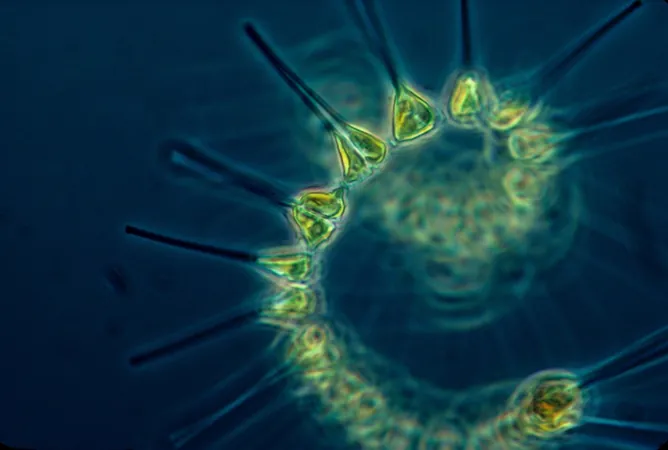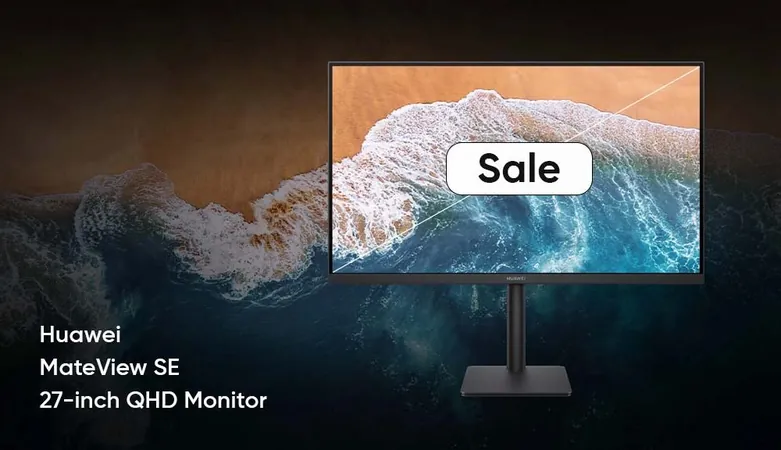
Unveiling the Ocean's Secrets: How Undersea Robots are Transforming Our Understanding of Phytoplankton
2024-10-30
Author: Wei
Introduction
Phytoplankton, the microscopic champions of the ocean, form the backbone of the marine food web—supporting an array of life from petite fish to massive whales. These tiny organisms are also pivotal in combating climate change, as they play a crucial role in absorbing carbon dioxide, making accurate monitoring of their populations indispensable for understanding the dynamics of our changing planet.
The Limitations of Traditional Monitoring
Traditionally, our understanding of phytoplankton has been hindered by reliance on satellites that primarily observe surface conditions. This method does not capture the immense biodiversity of phytoplankton existing beneath the waves, leading to incomplete data on these vital organisms. However, a revolutionary shift is occurring thanks to an innovative global initiative spearheaded by researchers at Dalhousie University.
The Role of BGC-Argo Floats
Enter the Biogeochemical-Argo (BGC-Argo) floats—an advanced network of underwater robots deployed across the world's oceans. Unlike satellites, these autonomous devices dive deep, measuring phytoplankton in areas that remain invisible from above. This groundbreaking approach promises to fill significant gaps in our knowledge of the ocean's biology, chemistry, and overall ecological health.
Key Findings
In a pivotal study published in the Proceedings of the National Academy of Sciences, scientists revealed that Earth's phytoplankton biomass is estimated at around 343 million tons—roughly equivalent to the weight of 250 million elephants. Alarmingly, more than 50% of this biomass is located beneath the reach of satellite detection. This discovery showcases the critical need for a new monitoring strategy in light of climate change, where ocean conditions fluctuate rapidly.
Importance of the Research
Lead author and Dalhousie graduate student Adam Stoer emphasizes, “The global fleet of these robots enables us to quantify phytoplankton populations and better understand their blooming patterns.” He adds that this technology is essential for tracking shifts in the ocean as it continues to warm, which could have far-reaching impacts on marine life and ecosystems.
Data Collection and Implications
The researchers harnessed data from approximately 100,000 water-column profiles collected by these autonomous floats. For the first time, they measured phytoplankton year-round across the entire ocean, a feat that was previously unachievable. As Blair Greenan from the Department of Fisheries and Oceans puts it, “This study underscores the vital role of BGC-Argo floats. Many of the creatures we monitor exist below the depths detectable by satellites, revealing the inadequacies of surface-level chlorophyll-a as a stand-in for carbon biomass in assessing ocean health.”
Challenges of Traditional Methods
While other researchers often embark on oceanographic research vessels to collect samples, this approach is simply too time-consuming and costly for effective global monitoring. The sheer scale of the oceans makes it a daunting challenge to gather sufficient data. Traditionally, satellite observations of ocean color, which provide estimates of chlorophyll-a levels, were the go-to method for appraising phytoplankton populations. However, variations in local conditions skew these estimates, demonstrating the need for a more robust assessment strategy.
Conclusion
As researchers mobilize the power of technology to probe the depths of the ocean, one thing becomes crystal clear: understanding phytoplankton dynamics is not just a matter of curiosity—it's a critical undertaking for our planet's future in the face of climate change. With underwater robots leading the charge, we are finally getting a clearer picture of the ocean's vibrant and vital ecosystems hidden beneath the surface. Stay tuned as this exciting research continues to unfold—and who knows what other secrets the deep sea might reveal!



 Brasil (PT)
Brasil (PT)
 Canada (EN)
Canada (EN)
 Chile (ES)
Chile (ES)
 España (ES)
España (ES)
 France (FR)
France (FR)
 Hong Kong (EN)
Hong Kong (EN)
 Italia (IT)
Italia (IT)
 日本 (JA)
日本 (JA)
 Magyarország (HU)
Magyarország (HU)
 Norge (NO)
Norge (NO)
 Polska (PL)
Polska (PL)
 Schweiz (DE)
Schweiz (DE)
 Singapore (EN)
Singapore (EN)
 Sverige (SV)
Sverige (SV)
 Suomi (FI)
Suomi (FI)
 Türkiye (TR)
Türkiye (TR)